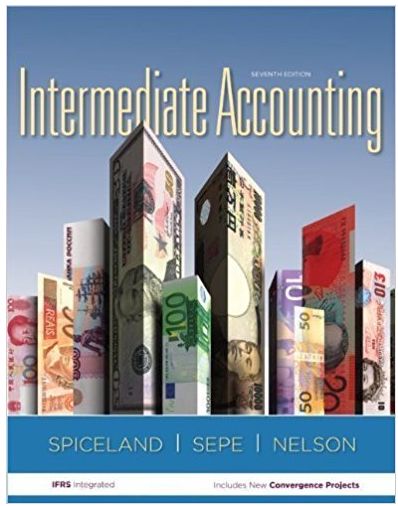The following questions are adapted from a variety of sources including questions developed by the AICPA Board
Question:
The following questions are adapted from a variety of sources including questions developed by the AICPA Board of Examiners and those used in the Kaplan CPA Review Course to study shareholders’ equity while preparing for the CPA examination. Determine the response that best completes the statements or questions.
1. In 2011, Fogg, Inc., issued $10 par value common stock for $25 per share. No other common stock transactions occurred until March 31, 2013, when Fogg acquired some of the issued shares for $20 per share and retired them. Which of the following statements correctly states an effect of this acquisition and retirement?
a. 2013 net income is decreased.
b. Additional paid-in capital is decreased.
c. 2013 net income is increased.
d. Retained earnings is increased.
2. Copper, Inc., initially issued 100,000 shares of $1 par value stock for $500,000 in 2010. In 2012, the company repurchased 10,000 shares for $100,000. In 2013, 5,000 of the repurchased shares were resold for $80,000. In its balance sheet dated December 31, 2013, Copper, Inc.’s Treasury Stock account shows a balance of:
a. $ 0
b. $ 20,000
c. $ 50,000
d. $100,000
3. On June 27, 2013, Brite Co. distributed to its common stockholders 100,000 outstanding common shares of its investment in Quik, Inc., an unrelated party. The carrying amount on Brite’s books of Quik’s $1 par common stock was $2 per share. Immediately after the distribution, the market price of Quik’s stock was $2.50 per share. In its income statement for the year ended June 30, 2013, what amount should Brite report as gain before income taxes on disposal of the stock?
a. $ 0
b. $ 50,000
c. $200,000
d. $250,000
4. Whipple Company has 1,000,000 shares of common stock authorized with a par value of $3 per share, of which 600,000 shares are outstanding. When the market value was $8 per share, Whipple issued a stock dividend whereby for each six shares held one share was issued as a stock dividend. The par value of the stock was not changed. What entry should Whipple make to record this transaction?
.png)
5. When a company issues a stock dividend which of the following would be affected?
a. Earnings per share.
b. Total assets.
c. Total liabilities.
d. Total stockholders’ equity.
6. Long Co. had 100,000 shares of common stock issued and outstanding at January 1, 2013. During 2013, Long took the following actions:
March 15 Declared a 2-for-1 stock split, when the fair value of the stock was $80 per share.
December 15 Declared a $0.50 per share cash dividend.
In Long’s statement of shareholders’ equity for 2013, what amount should Long report as dividends?
a. $ 50,000
b. $100,000
c. $850,000
d. $950,000
Beginning in 2011, International Financial Reporting Standards are tested on the CPA exam along with U.S. GAAP. The following questions deal with the application of IFRS in accounting for shareholders’ equity.
7. Mandatorily redeemable preferred stock (preference shares) is reported among liabilities and their dividends are reported in the income statement as interest expense using
a. U.S. GAAP.
b. IFRS.
c. Both U.S. GAAP and IFRS.
d. Neither U.S. GAAP nor IFRS.
8. Revenues, expenses, and components of other comprehensive income can be reported in a single statement of comprehensive income using
a. U.S. GAAP.
b. IFRS.
c. Both U.S. GAAP and IFRS.
d. Neither U.S. GAAP norIFRS.
Generally Accepted Accounting Principles (GAAP) is the accounting standard adopted by the U.S. Securities and Exchange Commission (SEC). While the SEC previously stated that it intends to move from U.S. GAAP to the International Financial Reporting Standards (IFRS), the... Balance Sheet
Balance sheet is a statement of the financial position of a business that list all the assets, liabilities, and owner’s equity and shareholder’s equity at a particular point of time. A balance sheet is also called as a “statement of financial... Dividend
A dividend is a distribution of a portion of company’s earnings, decided and managed by the company’s board of directors, and paid to the shareholders. Dividends are given on the shares. It is a token reward paid to the shareholders for their... Par Value
Par value is the face value of a bond. Par value is important for a bond or fixed-income instrument because it determines its maturity value as well as the dollar value of coupon payments. The market price of a bond may be above or below par,...
Step by Step Answer:

Intermediate accounting
ISBN: 978-0077647094
7th edition
Authors: J. David Spiceland, James Sepe, Mark Nelson





